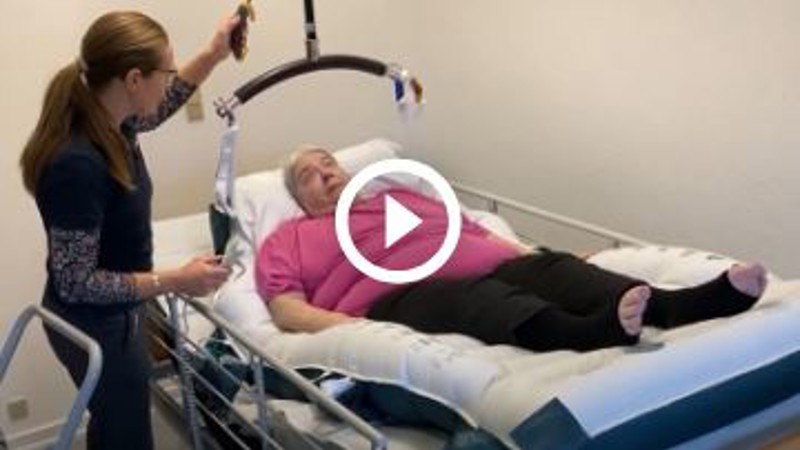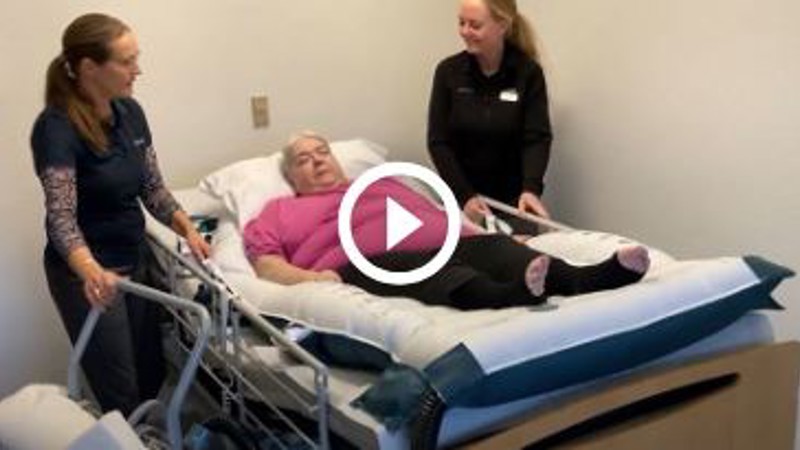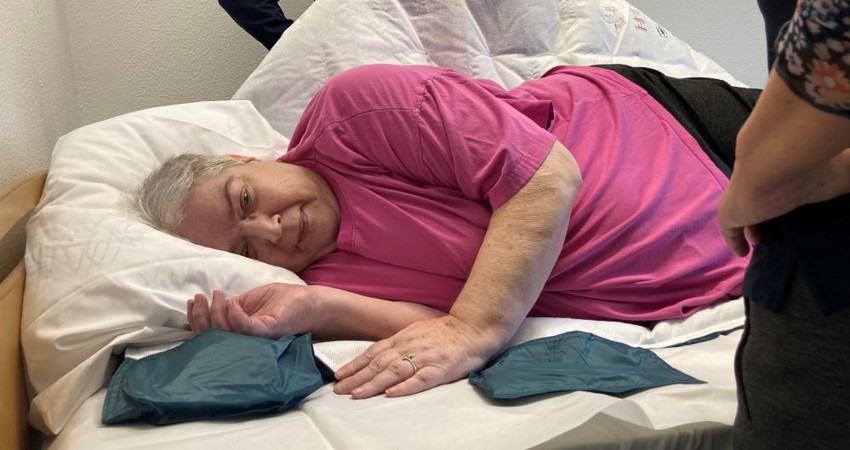
Air-assisted transfers from a patient's perspective – Elin’s story
When it comes to preventing workplace injuries and improving comfort for patients, why not take action? Elin's message is clear: after being hospitalised with severe pain and needing frequent repositioning, she believes it’s time to find better solutions.
We meet Elin on a damp December day, about four months after she was admitted to Esbjerg Hospital due to a staph infection that had spread to her bloodstream.
One Friday after work, while working as a social worker, she noticed the first symptoms that something was wrong. Initially, she thinks she may have the flu, but two days later, she collapses on the floor. An ambulance is called, and she is taken to the hospital.
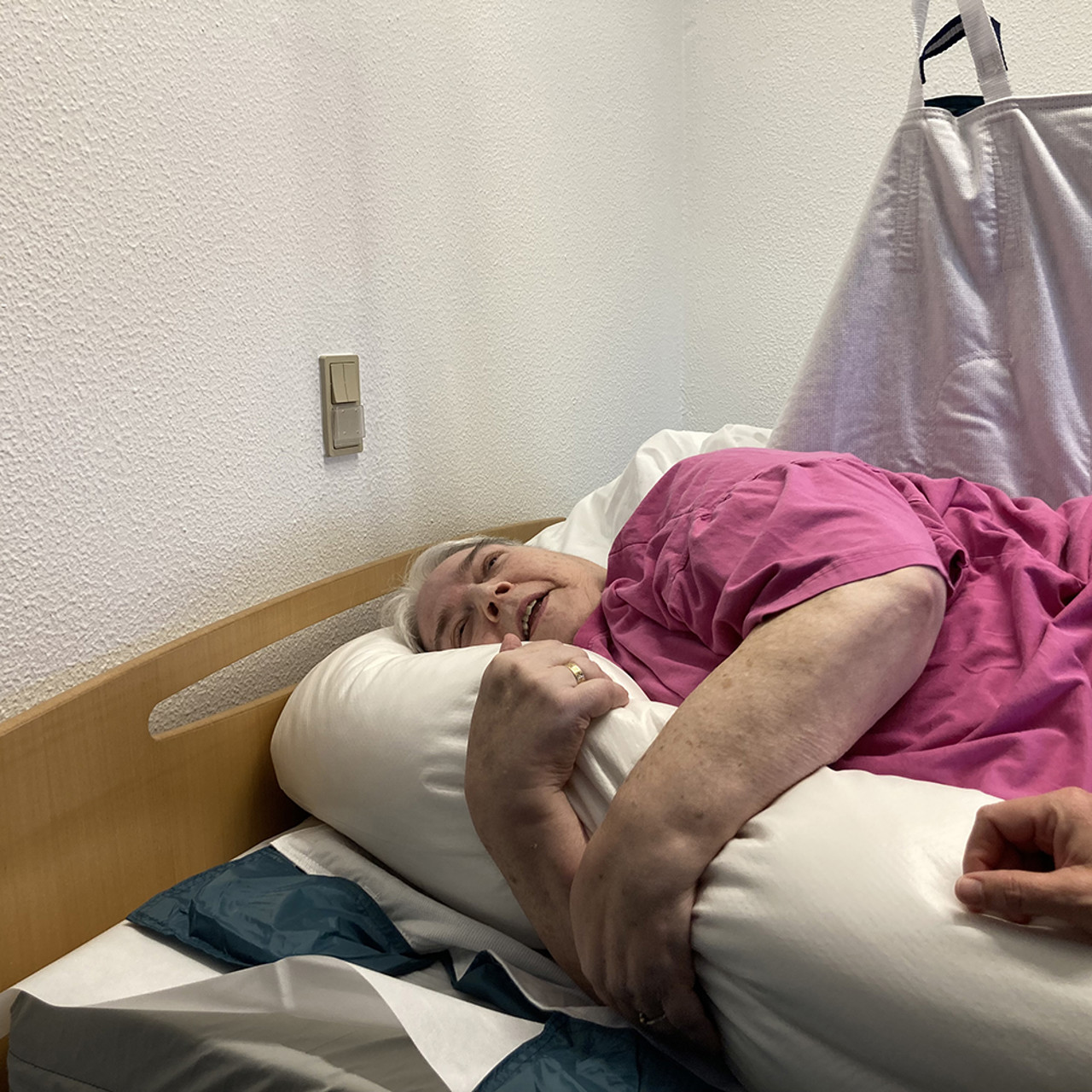
Starting over
Elin spends her first week in the intensive care unit, unable to do anything for herself. Gradually, she improves and is transferred to another ward. It’s a big shock to her, having to start over and learn how to do ordinary tasks, like completing a crossword puzzle. However, Elin maintains a positive outlook on the future, approaching each day one step at a time. When we meet her, she shares her interim goals: she still needs to be able to stand and walk with the aid of a walker. But she believes she will get there!
Struck by severe pain
During her hospitalisation, Elin experiences intense pain. Turning in bed is particularly uncomfortable, and she faces frequent disruptions due to diarrhoea, which necessitates regular lower-body hygiene.
As a bariatric patient, Elin lies in a bariatric bed. She understands that the transfers can be heavy and tiring for the staff, who do their best to assist her gently using available aids, including the bed, sling, ceiling lift, and sliding sheets.
Fortunately, a turning point in her hospitalisation occurs when she agrees to try an air-inflated mattress. This new mattress gives Elin hope that she can once again be pain-free.
“It was a miracle mattress,” she exclaims.
At times, she asks the staff, “Can’t I just get pumped up?” referring to a short inflation that provides her with a momentary relief from pain. “A few minutes without pain gave me strength for a few more hours,” Elin shares.
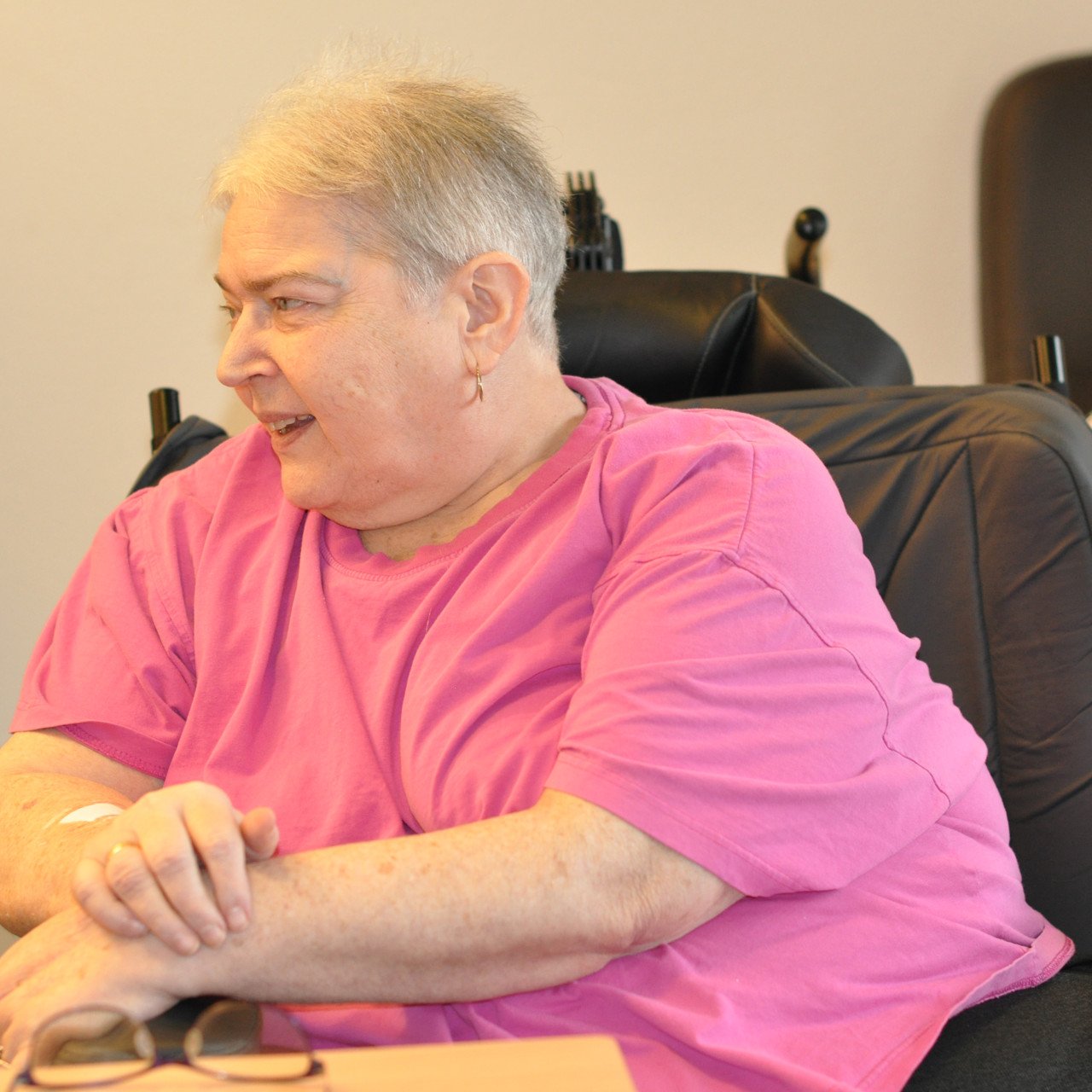
For the benefit of both patient and staff
Elin comes across as a humble and caring individual who deeply considers the well-being of others. She has always felt that she weighed too much and believes that no one should be hurt while assisting her. This is why it means a lot to her that the mattress helps the staff move her more easily.
By inflating the mattress, Elin can even reposition herself in bed when, like many bedridden individuals, she occasionally slides down towards the foot of the bed.
Can help more herself
Elin benefits greatly from the use of the HoverMatt mattress during her hospitalisation. The mattress accompanies her as she moves through different departments for MRI scans, helping to reduce the pain associated with these transfers. She has noticed that the staff are often pleasantly surprised to see her lying on a HoverMatt.
Elin explains that the mattress allows her to be more independent, as it alleviates her pain. Without the mattress, she rates her pain intensity as an eight on a VAS scale (1-10). However, when using the HoverMatt, her pain level significantly decreases.
Facts
Elin Laursen has worked as a social worker in the Family Counselling Service of Esbjerg Municipality for 40 years. She is overweight and suffers from osteoarthritis in both hips and her lower lumbar spine. Elin was recently hospitalised due to Staphylococcus, which entered her bloodstream.
During her hospital stay, the HoverTech HoverMatt SPU Mattress was used. This mattress significantly reduces the force needed to move a patient by 80-90% when inflated with air.
Videos
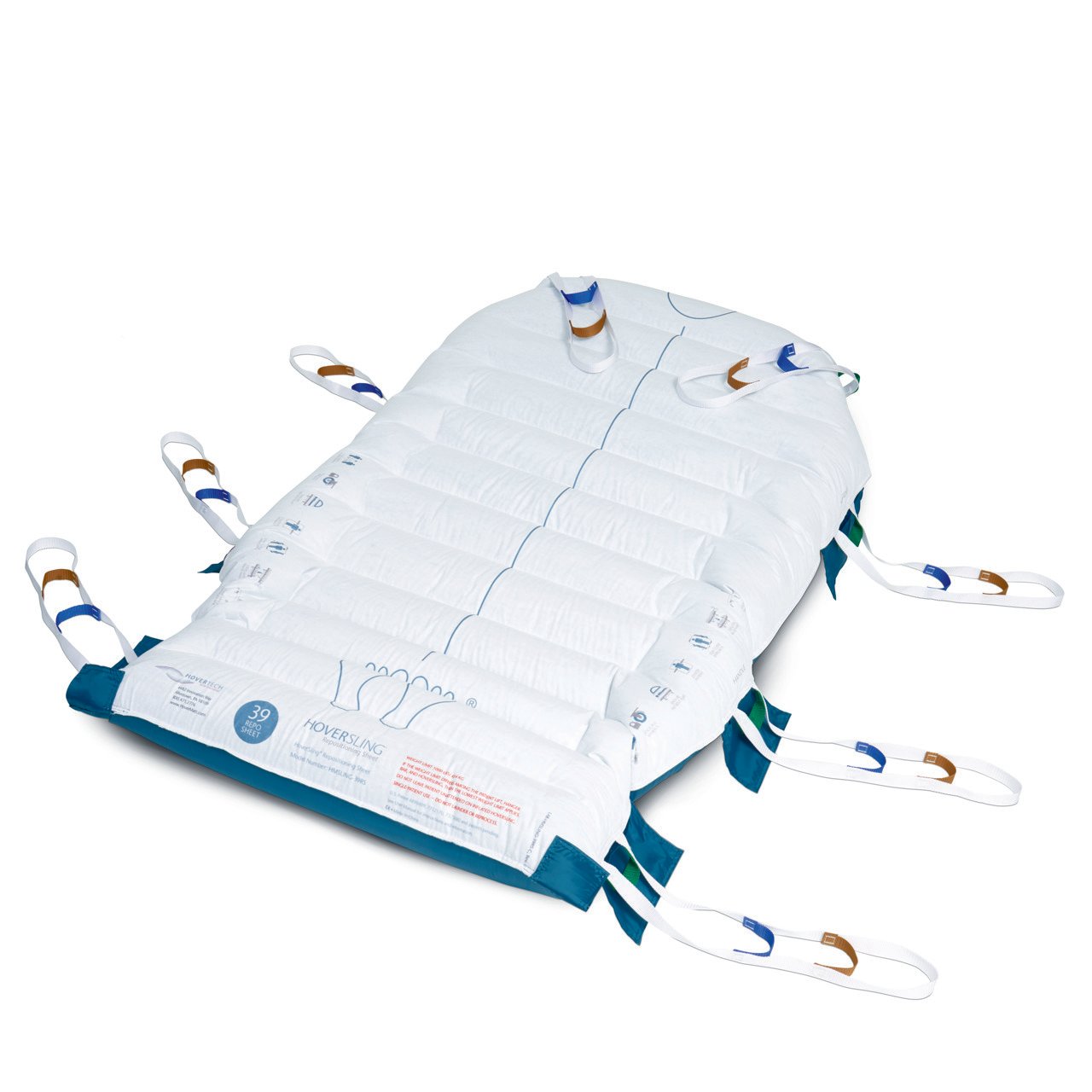
HoverSling SPU Repositioning Sheet
The HoverSling SPU® Repositioning sheet is made of a breathable material that can be left in place under the patient. The mattress can be used for transfers with and without the use of a lift. It is available in two sizes, 39" and 50" and is suitable for bariatric users in nursing homes and institutions.
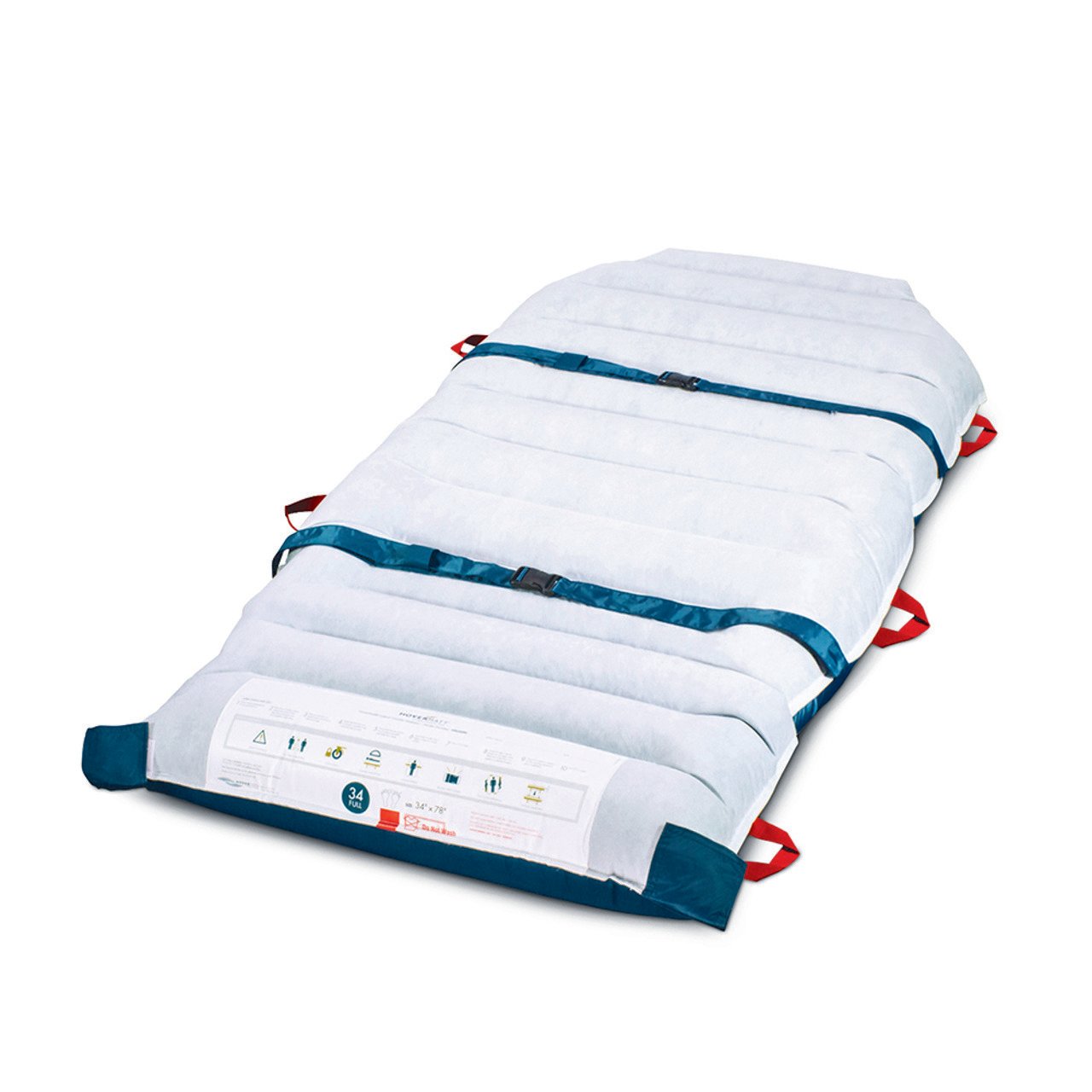
HoverMatt SPU®
The breathable material of the HoverMatt SPU fosters an optimal microclimate by allowing air circulation at the interface between the body and the surface, while also facilitating moisture evaporation. As a result, caregivers can confidently leave the HoverMatt under the patient.
